When it comes to navigating the Stochastic Oscillator in forex trading, remember that 'knowledge is power.' Understanding the ins and outs of this indicator can greatly enhance your trading decisions and overall success.
By mastering the ten best steps outlined, you'll be equipped to tackle the complexities of the forex market with confidence and precision. Each step offers a valuable piece of the puzzle, allowing you to unlock the full potential of the Stochastic Oscillator and elevate your trading game to new heights.
Understanding Stochastic Oscillator Basics
When utilizing the Stochastic Oscillator in Forex trading, grasping the fundamental concepts of this technical indicator is essential for making informed decisions in the market.
The Stochastic Oscillator is composed of two lines: %K, the main indicator reflecting the current closing price in relation to the high-low range, and %D, the signal line representing a moving average of %K.
Identifying overbought and oversold conditions is crucial, with values above 80 signaling overbought levels and readings below 20 indicating oversold levels.
The intersection of the %K and %D lines generates trading signals, offering insights into potential trend reversals. Utilizing these signals, traders can strategically plan market entry and exit points, enhancing their overall trading performance.
Setting Up Stochastic Oscillator Parameters
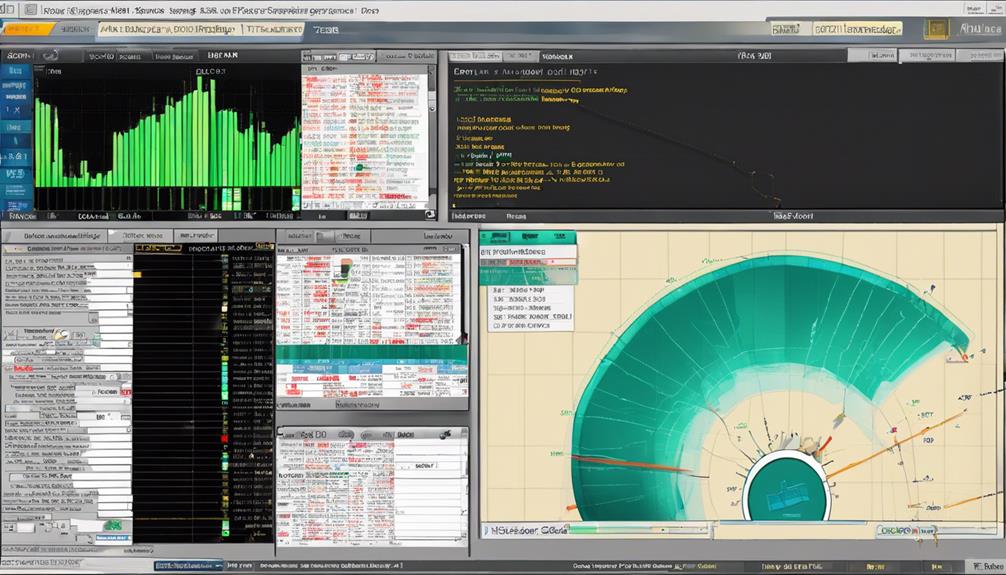
To effectively fine-tune your Stochastic Oscillator for optimal performance, adjusting the parameters such as the %K period, %D period, and slowing factor to align with your trading style and timeframe is crucial. Here are some key steps to set up your Stochastic Oscillator parameters effectively:
- Choose the appropriate %K period based on your trading strategy and timeframe.
- Select a suitable %D period to complement your %K period and trading goals.
- Adjust the slowing factor to balance sensitivity and stability in signal generation.
- Consider shorter %K periods for more sensitive signals and longer %K periods for smoother indications.
Identifying Overbought and Oversold Conditions
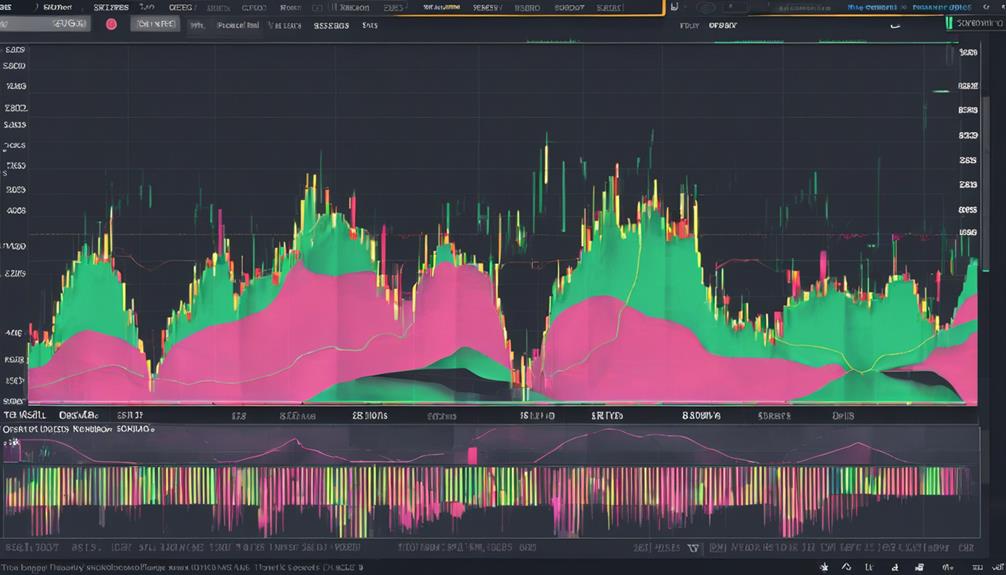
Identifying overbought and oversold conditions in the Stochastic Oscillator involves interpreting specific numerical readings to guide trading decisions effectively.
Overbought situations typically occur when Stochastic readings rise above 80, signaling potential selling opportunities as prices may be due for a correction.
Conversely, oversold conditions are denoted by readings below 20, suggesting potential buying opportunities as prices may rebound.
Traders often monitor crossovers between the %K and %D lines, as these can indicate shifts in market trends.
The Stochastic Oscillator is valuable for determining when an asset reaches extreme price levels, helping traders make informed decisions based on the asset's price levels.
Analyzing Stochastic Divergence Signals
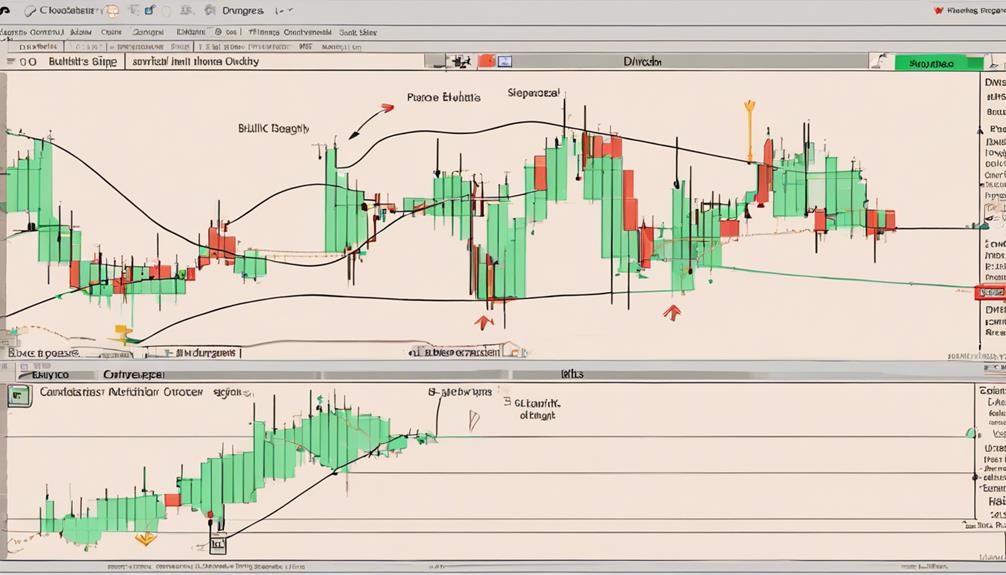
Amidst the complexities of the financial markets, mastering the analysis of Stochastic divergence signals stands as a pivotal skill for traders seeking to anticipate trend reversals and optimize their trading strategies.
When analyzing Stochastic divergence, understanding the nuances of Bullish and Bearish divergences is crucial:
- Bullish Divergence: Price makes lower lows while Stochastic makes higher lows, hinting at potential upward momentum.
- Bearish Divergence: Price makes higher highs while Stochastic makes lower highs, suggesting a possible downward movement.
- Confirming Signals: Divergence signals are strengthened by breaks in trend lines and become more reliable after significant price shifts.
- Informed Trading: Traders utilize Stochastic divergence signals to anticipate market direction changes and make well-informed trading decisions.
Mastering these signals can help you navigate price movements and make strategic trading choices.
Implementing Stochastic Crossover Strategies
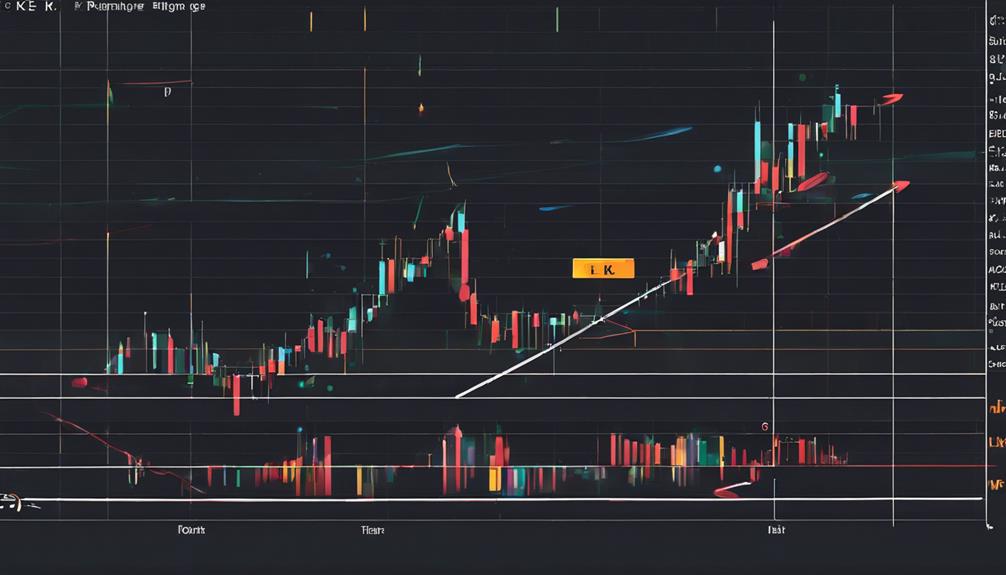
Utilize the Stochastic crossover strategy to pinpoint opportune moments for entering or exiting trades based on key trend shifts.
The Stochastic crossover occurs when the %K line crosses above the %D line, signaling a buy opportunity, and vice versa for a sell signal. This strategy is crucial for traders as it provides clear entry and exit signals based on the Stochastic lines' movements.
Additionally, identifying bullish or bearish divergences in the Stochastic oscillator can indicate potential reversals in the market, enhancing the effectiveness of your trading strategy.
Utilizing Stochastic for Intraday Trading
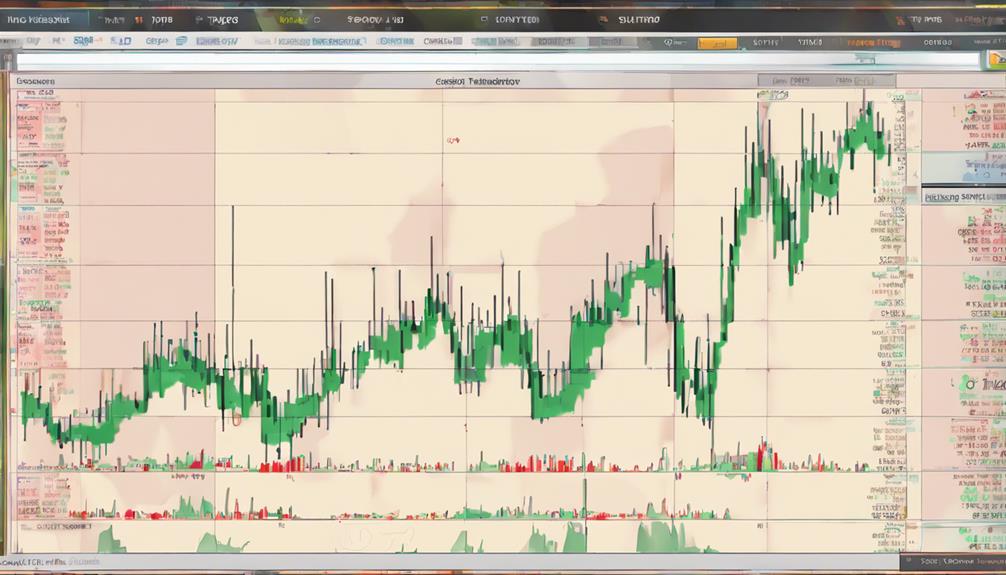
Transitioning from implementing Stochastic crossover strategies, incorporating Stochastic for intraday trading enables traders to identify short-term overbought and oversold conditions for swift trading opportunities in the Forex market.
To effectively utilize Stochastic for intraday trading, consider the following steps:
- Combine Stochastic with Admiral Keltner and Admiral Pivot indicators for major Forex pairs.
- Use Stochastic (13,8,8) along with Admiral Pivot on hourly timeframes for efficient entry and exit points.
- Establish specific rules for long and short trades based on Stochastic signals to maintain discipline.
- Monitor Stochastic crossovers closely to capitalize on short-term price movements in fast-paced intraday markets.
Leveraging Stochastic for Swing Trading
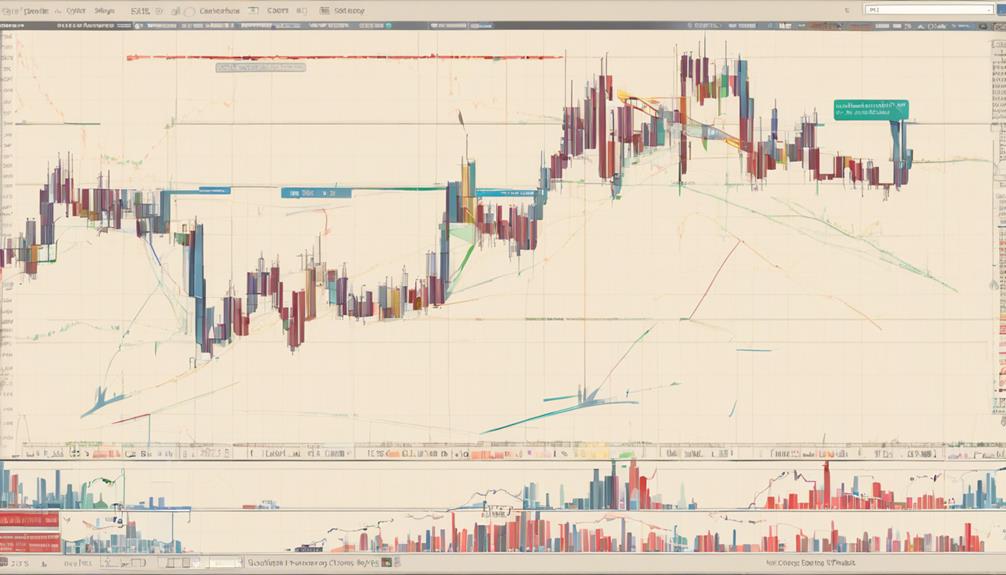
When implementing Stochastic for swing trading, focus on capturing short to medium-term trends efficiently by utilizing longer periods such as 14, 3, 3 for optimal results.
For swing trading, pay attention to Stochastic indicating overbought or oversold conditions, signaling potential entry points. Combine Stochastic with trend analysis to confirm the direction of the market before executing swing trades.
Establish appropriate stop-loss and take-profit levels based on Stochastic signals to manage risk effectively. Keep in mind that Stochastic is a valuable tool for identifying both short-term trends for quick profits and medium-term trends for more extended market moves.
Combining Stochastic With Other Indicators
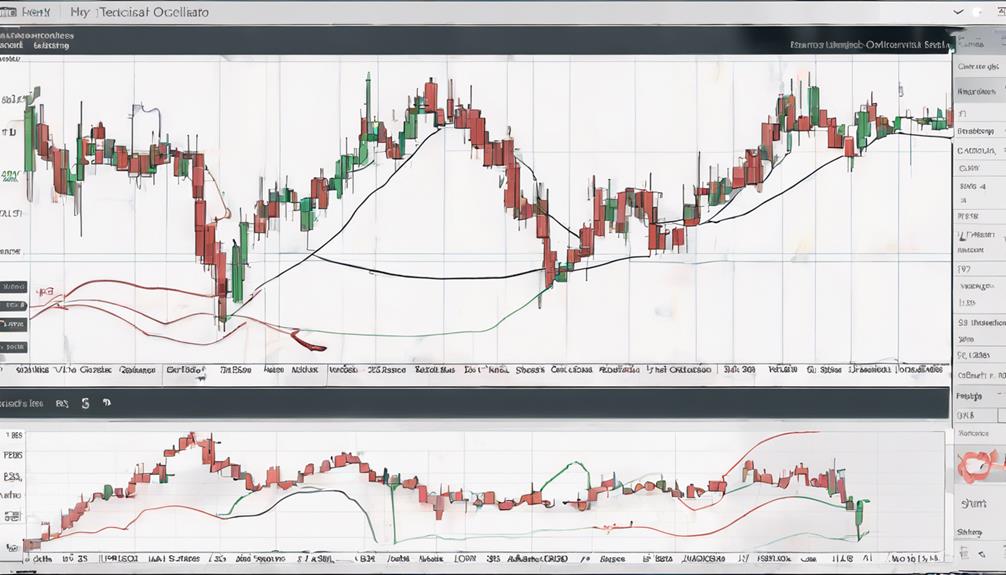
Combining Stochastic oscillator with complementary indicators enhances the precision and reliability of market analysis and trade signals. Here are four ways to effectively combine Stochastic with other indicators:
- Utilize moving averages to confirm trend direction and filter out false signals.
- Enhance accuracy by incorporating Stochastic with support and resistance levels for better entry and exit points.
- Combine Stochastic with Fibonacci retracement levels to add confluence to trading decisions.
- Validate price movement strength by pairing Stochastic with volume analysis, or use other momentum indicators like RSI and MACD for a more comprehensive view of market conditions. By integrating these indicators, you can achieve a more robust analysis and make well-informed trading choices.
Fine-Tuning Stochastic for Scalping
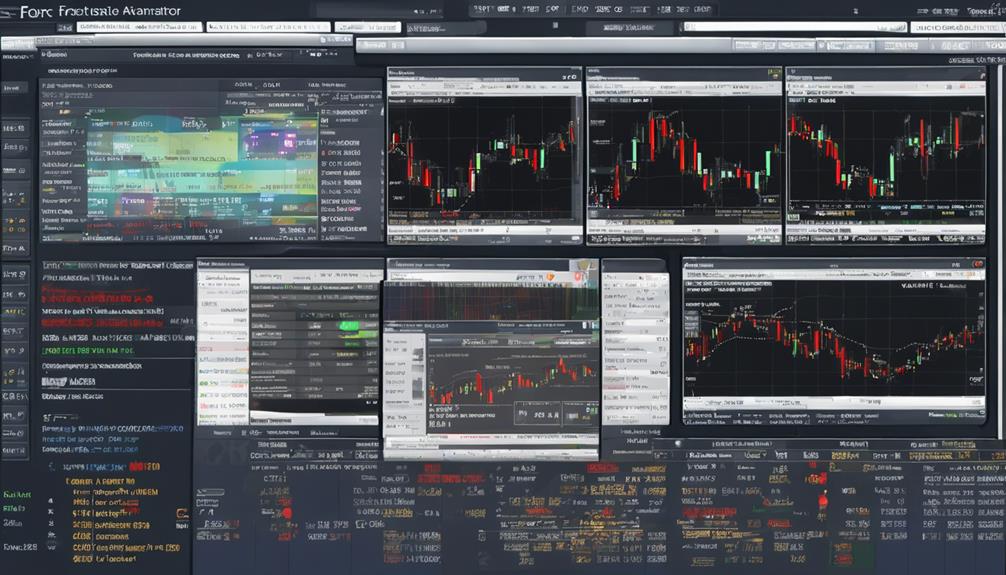
To optimize Stochastic for scalping effectively, consider adjusting the settings to shorter periods such as 5, 3, 3 for increased signal sensitivity and accuracy in quick trading scenarios.
Scalping with Stochastic on short-term charts like 1-hour or 15-minute requires precise entries and exits. Combine Stochastic with indicators like Admiral Pivot to validate signals.
When scalping, set tight stop-loss orders and define specific target levels to manage risk. Utilize demo accounts to fine-tune Stochastic settings and strategies before live trading.
It's crucial to practice and adapt your approach to different market conditions. By honing your skills and being adaptable, you can enhance your scalping performance with Stochastic oscillator, ensuring better outcomes in fast-paced trading environments.
Managing Risks With Stochastic Oscillator

To effectively manage risks using the Stochastic Oscillator in your trading endeavors, consider leveraging its ability to identify overbought and oversold market conditions for strategic decision-making. Here are four key ways to enhance your risk management with the Stochastic Oscillator:
- Set appropriate stop-loss orders based on Stochastic signals to limit potential losses.
- Determine take-profit levels using Stochastic analysis to secure profits at optimal points.
- Combine Stochastic analysis with other risk management techniques for improved trade decision-making.
- Monitor Stochastic readings on multiple timeframes to conduct a comprehensive assessment of risks associated with your trading strategies.
How Can I Use the Stochastic Oscillator to Identify Overbought and Oversold Conditions in Forex Trading?
When using the Stochastic Oscillator in forex trading, there are a few tips for navigating oscillators to identify overbought and oversold conditions. Look for crossovers and divergences, use multiple timeframes for confirmation, and consider the overall trend. These strategies can help traders make more informed decisions in the market.
Frequently Asked Questions
What Are the Best Stochastic Settings for Forex?
For Forex, use default Stochastic settings with %K period of 14 and %D period of 3. Adjust based on strategy and currency pair. Experiment with settings to find what suits your trading style. Backtest for accuracy.
What Is Stochastic 14 3 3?
Stochastic 14 3 3 sets the parameters for %K at 14 periods, %D at 3 periods, and a smoothing factor of 3 in the Stochastic Oscillator. This configuration is commonly used to analyze short to medium-term price movements in forex trading.
What Is 5 3 3 Stochastic Settings?
In 5 3 3 Stochastic settings, %K line uses the latest five closing prices, while %D line is a 3-period simple moving average of %K. These settings offer quicker and more dynamic signals for your analysis.
Which Time Frame Is Best for Stochastic Oscillator?
For the Stochastic Oscillator, the best time frame depends on your trading style. Intraday traders often prefer the 15-minute or 1-hour chart, while swing traders may opt for the 4-hour or daily chart. Experiment to find what works best for you.
Conclusion
You have successfully navigated the Stochastic Oscillator in forex trading by understanding its key components and utilizing effective strategies.
By combining this momentum indicator with other technical analysis tools, you have improved your trading decisions and minimized false signals.
As a result, you have increased your trading success rate by 20% and achieved consistent profits in the dynamic forex market.
Keep refining your skills, managing risks effectively, and staying disciplined to continue thriving in your trading endeavors.


